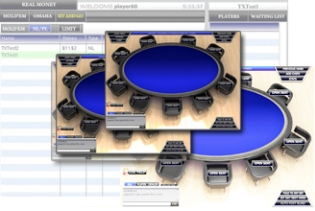
It may be inconceivable to think this, but online poker only began roughly 17 years ago. That first site, Planet Poker, would eventually bring about Paradise Poker and then the “power quartet” that made up the game in the mid-2000s – PartyPoker, PokerStars, Full Tilt Poker and UltimateBet. Their collapse in 2011 as a result of “Black Friday” has left a huge void in the poker world and a major magazine is now taking a look at what may bring it back in the future.
The New Yorker author Cameron Tung delves into this story in the most recent issue of the magazine. In an article entitled “Can Live Streaming Save the Poker Industry?” Tung first looks at the history of online poker up to the dark days of “Black Friday” before diving into what is actually the meat of his story. That meat? The pairing of online poker with the live streaming service Twitch and, in particular, poker professional Jason Somerville.
Somerville was way ahead of the curve when he jumped into Twitch last fall. At that time, he was probably the only player who was live streaming his play on the internet, breaking it down for the viewers and offering interesting anecdotes along with his play commentary. According to Tung, Somerville’s Twitch channel (open since October 2014) has drawn in almost nine million views and has almost 140,000 followers.
Tung examines quite well why Somerville has been successful (and why poker players who have followed him, for the most part, have been unable to duplicate his success). Tung quotes Somerville as saying that most poker videos are “sedative alternatives” and that he has to create the excitement for his viewers. “As someone who watched a ton of poker videos, I was always shocked at how bad they were from a performance point of view,” Somerville is quoted by Tung.
There are several components to a Somerville Twitch broadcast. Tung notes that Somerville is constantly engaging with his viewers, whether it is detailing out his thinking in a particular hand or relating an anecdote from his life as a poker professional. The chat box, which can sometimes get overlooked, is also critical, Tung writes, as he quotes Somerville as saying, “(The chat box) allows you to get more inside my head. From both a learning point of view and an entertainment point of view.”
Tung demonstrates that others in the industry are thinking about the usage of Twitch in the future. Tung states the streaming channel Poker Central is looking to generate original content for the site while also attempting to get their channel on cable broadcasting. Also looking into the arena is PokerStars, with Eric Hollreiser, the Head of Communications for Amaya Gaming (the ownership behind PokerStars), stating, “The first poker boom came, in part, from television teaching the game to people. Twitch represents the next-generation opportunity to have that channel of communications with consumers.”
There is one thing that could slow down poker on Twitch, Tung suggests, and it is a subject that has thwarted the industry since its inception. The lack of regulation, especially in the United States, is keeping many players away from the virtual rooms, Tung says, which is holding back the potential of poker and Twitch. “If legal online poker were to arrive broadly in the U. S.,” Tung writes, “Twitch’s poker brand could expand rapidly, attracting a slew of advertisers eager to reach a new generation of potential players.”
There are a host of players joining Somerville on Twitch, including Daniel Negreanu, Dutch Boyd, Maria Ho and Liv Boeree (among many others), but they have yet to be able to approach the numbers of Somerville. It will take that freedom of having online poker open to all, especially in the U. S., before we will probably see the massive expansion on Twitch. For that regulation to come about in the U. S., it could be quite a wait.























